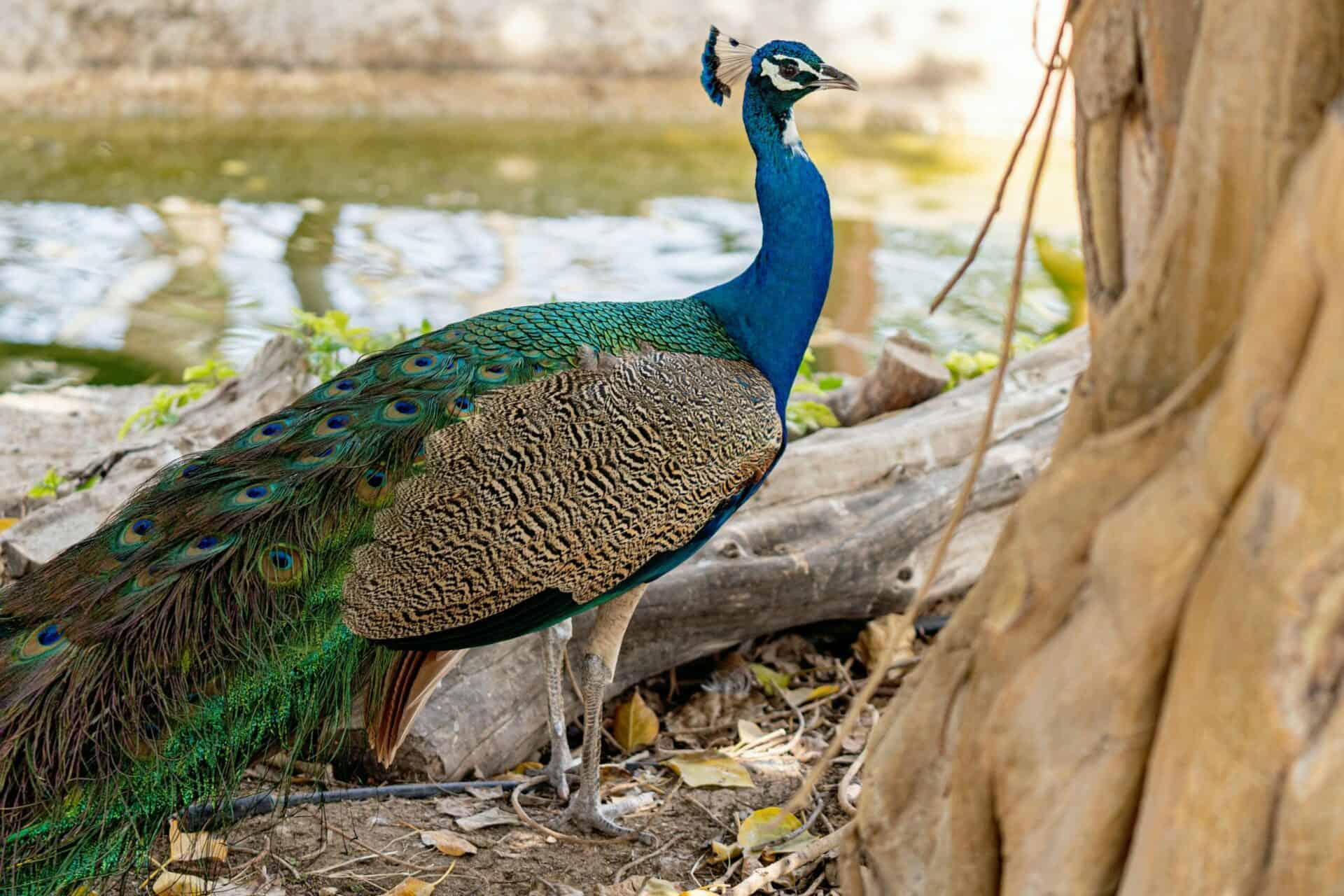Peacocks, known scientifically as Pavo cristatus, captivate with their iridescent tails and regal stance. Yet, their beauty isn’t solely visual; it extends to their auditory expressions. Their calls, diverse and rich, punctuate the air in their natural habitats, contributing to the symphony of nature sounds. But what does a peacock really sound like? And what are they communicating through these calls? This article dives into the acoustic world of peacocks, exploring the science behind their vocalizations and the meanings embedded in their calls.

The Science of Peacock Calls
To understand peacock calls, we must first explore the bird’s anatomy. Peacocks are equipped with a syrinx, a vocal organ located at the trachea’s base. Unlike human vocal cords, the syrinx can produce two independent tones simultaneously. This unique structure allows for the diverse range of peacock vocalizations we hear.
Peacocks use their calls for various reasons: to attract mates, establish territory, or signal danger. The calls vary in pitch, volume, and duration, depending on their purpose. For instance, mating calls are often louder and longer to carry across distances, asserting the male’s presence to potential mates.
Types of Calls and Their Meanings
Peacocks have a repertoire of sounds. The most common is the ’meow’ call, similar to a cat’s but louder and more resonant. This call, primarily used during mating season, is a signal of the male’s fitness. Another sound is the ’kraa’ call, a loud, harsh sound used to signal distress or alert others of potential danger. These nature sounds, while common in peacocks, can be found in other bird species, though with variations.
Peacocks are expressive birds, and their behavior when calling is indicative of their intentions. During mating season, male peacocks fan their extravagant tails, shimmering with iridescent hues, and emit loud, high-pitched calls. These calls, known as ’meow’ calls due to their similarity to a cat’s meow, are designed to attract females’ attention. They often accompany these calls with a vibrant display of their plumage, shaking their feathers to create a rustling sound, adding an auditory component to their visual spectacle.
Conversely, when peacocks sense a threat, their calls transform into urgent, harsh sounds. These alarm calls, known as ’kraa’ calls, are sharp and repetitive, serving to warn others in the vicinity of impending danger. During this, peacocks’ body language is tense, with their feathers tightly packed and their movements erratic, showcasing their readiness to flee or confront the threat.

Peacock Calls in Comparison to Other Birds
Peacock calls share similarities with other bird calls. For example, the ’kraa’ call is not exclusive to peacocks; it’s found in crows, though with a harsher tone. This similarity illustrates the evolutionary parallels among bird species, where different species develop similar solutions to common problems, like warding off predators.
However, peacocks also have unique calls. The ’meow’ call, for instance, doesn’t have a direct counterpart in other bird species. This uniqueness underscores the peacock’s distinct place in the avian world.
Also Read: Can Dogs Eat Banana Chips? A Guide for Pet Owners
Comparisons of Calls Between Different Species of Peacocks

While the Indian Peafowl is the most common species, there are other species like the Green Peafowl and Congo Peafowl, each with its unique set of calls. The Green Peafowl, for instance, has a louder, more resonant call that echoes through their forest habitats, while the Congo Peafowl’s calls are lower-pitched, almost growl-like, a sound adapted to their denser jungle environment. These variations highlight the adaptations each species has undergone to suit their specific environments, a testament to nature’s versatility.
The Role of Peacock Calls in Human Culture and History

Peacock calls have reverberated throughout human history, finding their place in various cultural and religious contexts. In Hindu mythology, the peacock’s call is a symbol of monsoon’s arrival, bringing life-giving rain. In ancient Greek and Roman mythology, the peacock is associated with Hera (Juno), the queen of the gods, and its call was believed to herald her presence.
Furthermore, peacock calls have been considered omens in different cultures. In some European folklore, a peacock’s cry is seen as a bad omen, while in others, it’s considered a rain-bringer. These beliefs showcase the peacock’s prominence in human culture, transcending mere ornithological interest.
In modern times, peacock calls recorded on audio devices serve as calming nature sounds in various therapeutic and meditation practices, highlighting the continued significance of these majestic birds in human life.
Conclusion
Peacock calls are a testament to nature’s ingenuity. From the multifaceted ’meow’ to the urgent ’kraa’, these sounds are an integral part of the peacock’s survival and social strategies. They’re not just nature sounds; they’re a language, conveying messages that, while not always decipherable to us, are clear and meaningful within the avian community. So, the next time you hear a peacock call, listen closely. It’s not just a sound; it’s a story.
“Interested in more nature insights? Dive into our Home & Lifestyle blogs for a deeper look into the animal kingdom and the world around us. Discover, learn, and become a part of the conversation.









